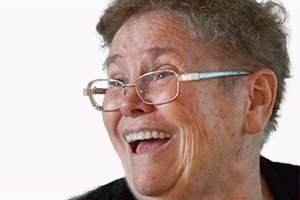
December 24, 2024
As the holidays are beginning to wind down and the decorations are about to be put away once again, do you take a moment to look over those Christmas cards you received from friends and family? Those pretty cards that represent the holidays and family are so pretty, and many touch your heart as you remember friends who have moved away and family that did not get to come home for Christmas.
Let’s take a journey back into the “good ole days” to remember the first Christmas greetings. Back in the early 1900s, many folks sent Christmas greetings by postcards. It only cost a penny to send that special greeting to let folks know you were thinking of them at Christmas time. Many postcard collectors have those treasures in their collections.
Well, there was a young man by the name of Joyce Clyde Hall who had an idea. He left his home in Nebraska at the age of 18 and traveled by train to the big town of Kansas City. In his possession were two shoe boxes filled with postcards. The date was Jan. 10, 1910. J.C. Hall did not have any money, but he had an idea. He didn’t even have enough money to take a horse-drawn cab to the YMCA where he planned to stay. But he did have an entrepreneurial spirit that could not be squashed.
He planned to take his two shoe boxes full of the new trendy postcards and start a business… from his room at the YMCA. His business did pretty well until the YMCA complained because of the large mail volume.
In 1911, J.C.’s older brother Rollie Hall, a successful traveling salesman, joined his brother in founding the Hall Brothers Co. They were eventually joined by yet another brother, William Hall. The business was growing, but by 1912, folks were beginning to buy fewer postcards because it was felt the cards lacked privacy; anyone could read the messages on the back. The Hall Brothers responded by producing and selling greeting cards with envelopes.
By 1914, business was doing so well that the Hall Brothers opened a retail store in their warehouse on the first floor of the Corn Belt Bank Building in Kansas City. They sold cards, gifts and stationery.
Exactly five years and one day from the time that J.C. Hall arrived in Kansas City, on Jan. 11, 1915, a fire destroyed the Hall Brother’s retail store, office and their entire inventory, including the unfilled Valentine orders. Only the safe was salvaged, leaving them $17,000 in debt.
J.C. Hall’s entrepreneurial spirit, though, came through, and he turned that fire disaster into an opportunity. The Hall Brothers purchased engraving presses and began printing and publishing cards of their own. (They had previously had other printers print their designs.)
The company began to lure artists to help them design and color their greeting cards. By 1917, the inventory included gift wrap. The company had run out of colored tissue paper so they substituted some of the decorated envelope lining they imported from France. It was a big hit with the consumer.
The business ventured out as they paid an unbelievable amount of $500 to popular author Edgar A. Guest for use of his “A Friend Greeting” in 1921. They sent out salesmen to all 48 states. By 1928, the name Hallmark began to appear on the back of greeting cards, making it the official brand name for the product. All greeting cards were painted by hand until 1931, when Hall Brothers printed their first color card.
In 1932, Hall brothers signed a license agreement with Walt Disney Co. in the first business agreement for both businesses.
Up until 1935, greeting cards were not easy to browse because most stores kept them in a drawer and you had to ask to see them. The Hall brothers patented the Eye Vision display, which put the cards at easy reach for the consumer.
The Great Depression caused hardship for many people, but J.C. Hall looked out for his employees. He started benefits including retirement pensions, medical aids, life insurance and vacation pay programs for his valued employees. He also started milk breaks, providing the milk from his dairy herd in Leavenworth, Kan. But he soon discovered that not all employees liked milk, so he provided coffee and iced tea, creating one of the country’s first workplace coffee breaks.
In 1944, the Hallmark slogan was created, “When you care enough to send the very best.” Business continued to thrive with the addition of license agreements from Charles Schultz’ “Peanuts,” Norman Rockwell and many others.
So when you look at those Christmas Cards that send special greetings to you, remember the young 18-year-old kid from Nebraska who had a great idea and shared it with the world. A kid who knew the value of a good employee and cared about what the consumer wanted.
May your New Year be filled with hope, love and laughter!
